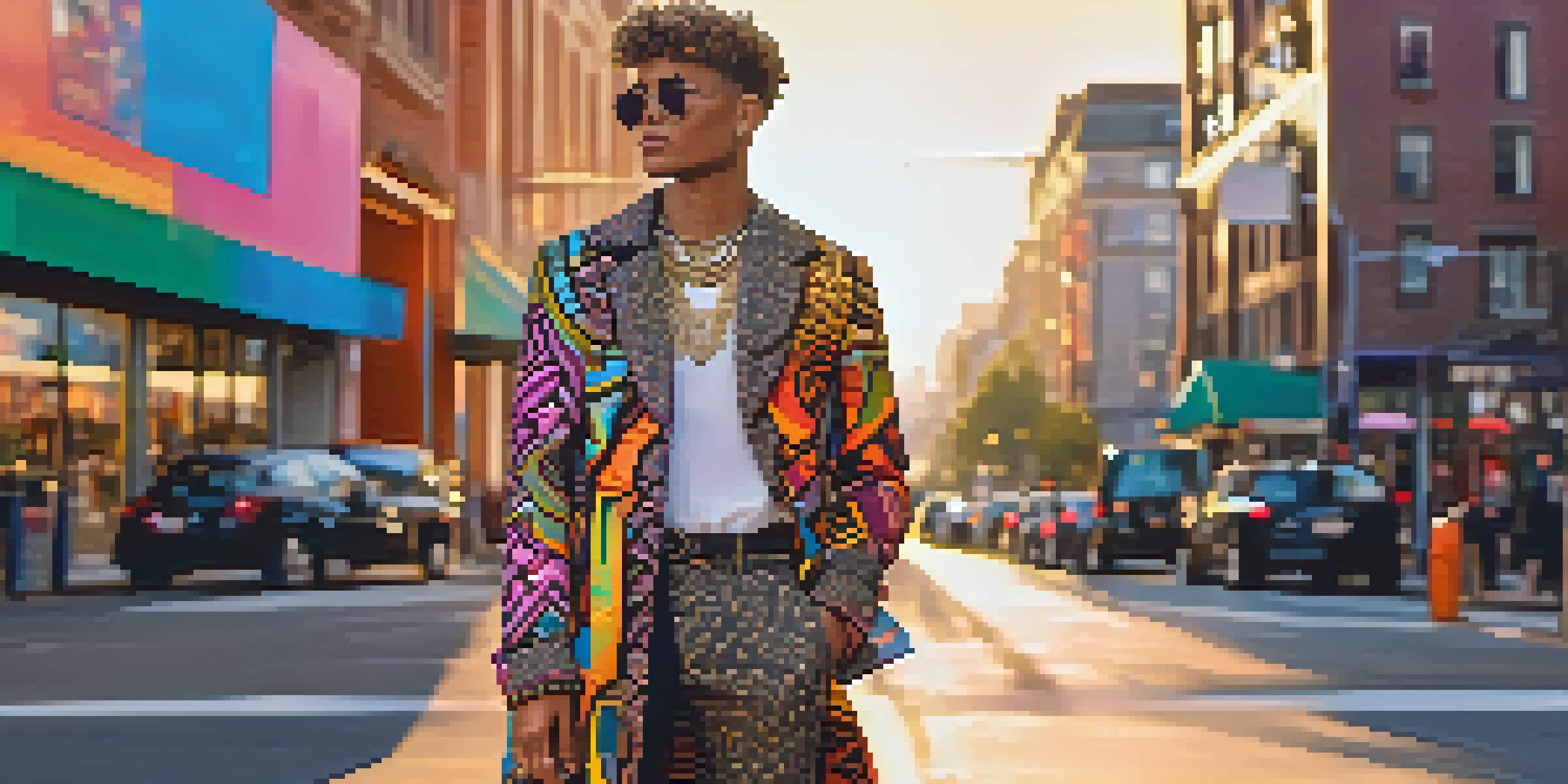Balancing Act: Fashion Influencers and Brand Collaborations

Understanding the Role of Fashion Influencers Today
Fashion influencers have become key players in the digital landscape, shaping trends and consumer preferences. With their authentic voices and unique styles, they resonate with audiences in a way traditional advertising often cannot. These influencers leverage platforms like Instagram and TikTok to connect with followers, building trust and credibility around their fashion choices.
Influencer marketing is not just a trend; it is a crucial part of the marketing strategy for brands today.
Their impact can be seen in the rapid rise of brands that successfully collaborate with influencers to promote products. This partnership often feels more organic and relatable, as influencers showcase items within the context of their everyday lives. As a result, consumers are more likely to engage with these products, leading to increased sales and brand loyalty.
However, the influencer landscape is constantly evolving, with new faces emerging and trends shifting. This requires both influencers and brands to stay adaptable, ensuring that collaborations remain relevant and exciting for audiences. The dynamic nature of fashion means that influencers must continuously reinvent their personal brands alongside the companies they represent.
The Benefits of Collaborations for Influencers and Brands
Collaborations between influencers and brands can be a win-win situation. For influencers, working with established brands can enhance their credibility and expand their reach. This can lead to new opportunities, such as exclusive events or product lines, which further elevate their status in the industry.

On the flip side, brands benefit by tapping into the influencer's established audience. This targeted approach allows brands to reach potential customers who are already interested in their niche. The authentic endorsement from an influencer can feel more persuasive than a traditional ad, driving engagement and conversions.
Influencers Shape Fashion Trends
Fashion influencers leverage their unique styles and authentic voices to connect with audiences, driving trends and consumer preferences.
Moreover, these collaborations can foster creativity, resulting in unique campaigns that capture attention. Whether it’s a limited-edition product launch or a themed collection, influencers can infuse their personal flair into brand offerings, appealing to their followers in a fresh way.
Navigating Authenticity in Brand Partnerships
Authenticity is crucial in the world of fashion influencers. Audiences can easily spot inauthentic relationships, which can lead to distrust and negative backlash. Therefore, influencers must choose partnerships that align with their values and resonate with their personal brand to maintain credibility.
Authenticity is the key to influencer marketing. If you don't have it, you won't succeed.
For brands, selecting the right influencer is equally important. It's not just about follower count; it's about finding someone whose style and audience align with the brand's identity. A thoughtful collaboration that feels genuine can enhance the brand's image and strengthen consumer relationships.
This focus on authenticity requires ongoing communication and collaboration between influencers and brands. By actively involving influencers in the creative process, brands can create campaigns that feel natural and engaging, rather than forced or overly promotional.
Challenges in Influencer-Brand Collaborations
Despite the many advantages, collaborations can come with their own set of challenges. Misalignment between an influencer's creative vision and the brand's expectations can lead to friction and unsatisfactory outcomes. Clear communication from the outset is essential to ensure all parties are on the same page.
Additionally, there’s the risk of over-saturation. As more influencers collaborate with brands, audiences may become desensitized to such promotions. This highlights the need for brands to innovate and create unique, eye-catching campaigns that stand out in a crowded marketplace.
Value of Authentic Collaborations
Genuine partnerships between influencers and brands enhance credibility and engagement, leading to more successful marketing campaigns.
Finally, managing the influencer's audience expectations can also be tricky. Influencers must balance their personal brand with the brand's messaging, which can sometimes lead to a disconnect. Finding that sweet spot is key to a successful collaboration that benefits both parties.
The Impact of Social Media Algorithms on Collaborations
Social media algorithms play a significant role in the visibility of influencer collaborations. These algorithms determine what content is shown to users, affecting engagement rates and overall success. Therefore, understanding these algorithms is crucial for both influencers and brands to maximize their reach.
For example, platforms like Instagram prioritize content that garners high engagement quickly. This means that collaborations need to be strategically timed and promoted to capture audience interest. Influencers often adjust their posting strategies based on algorithm changes, ensuring their collaborations receive the attention they deserve.
Brands can benefit from this knowledge by creating campaigns that encourage interaction, such as contests or Q&A sessions. By engaging the audience in meaningful ways, they can boost visibility and enhance the success of their collaborations with influencers.
Future Trends in Influencer Marketing and Fashion
As the digital landscape continues to evolve, so will the influencer marketing space. One emerging trend is the rise of micro and nano influencers, who may have smaller followings but boast highly engaged audiences. Brands are increasingly recognizing the value of these influencers, as they often foster deeper connections with their followers.
Another trend is the integration of technology, such as augmented reality (AR) and virtual reality (VR), into influencer marketing. These tools can create immersive experiences that allow consumers to visualize products in their own lives, enhancing the effectiveness of influencer collaborations.
Navigating Challenges Together
Clear communication and adaptability are essential for influencers and brands to overcome potential challenges in their collaborations.
Lastly, sustainability will play a crucial role in future collaborations. As consumers become more eco-conscious, brands will seek partnerships with influencers who promote ethical and sustainable practices. This aligns with the growing demand for transparency in the fashion industry, making it an essential consideration for future campaigns.
Conclusion: The Art of Balancing Influence and Brand Identity
In conclusion, the relationship between fashion influencers and brands is a delicate balancing act. It requires careful consideration of authenticity, audience engagement, and creative innovation. When done right, these collaborations can lead to remarkable success and growth for both parties.
Both influencers and brands must remain adaptable, continually reassessing their strategies in response to changing trends and consumer behaviors. By fostering genuine relationships and prioritizing authenticity, they can create impactful campaigns that resonate with audiences.

Ultimately, the future of fashion marketing lies in the ability to maintain this balance, ensuring that both influencer voices and brand identities shine through in collaborative efforts.